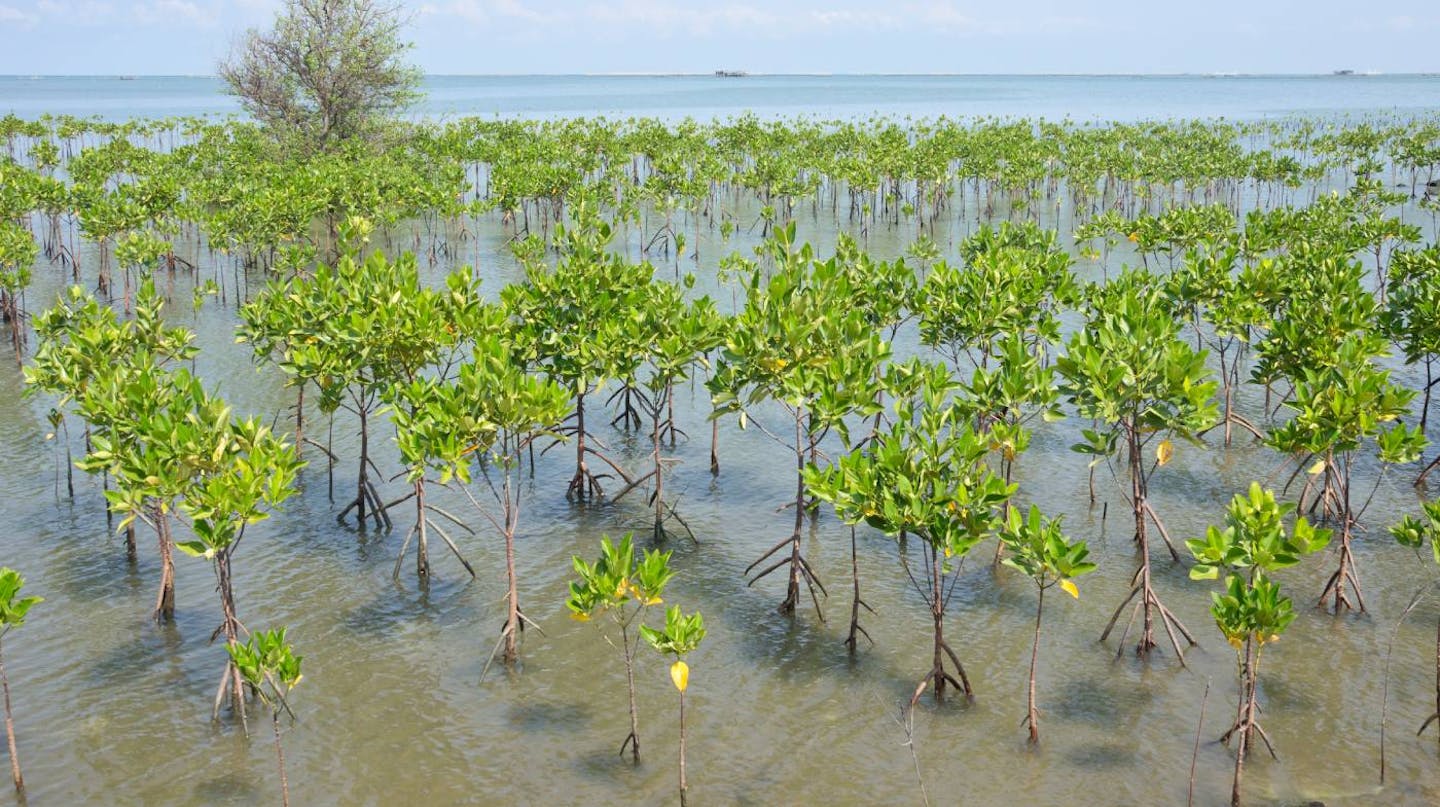Six projects restoring vital mangrove forests around the world
Recognized by their dense tangle of roots, mangroves are the wetlands between the coast and mainland. These trees and vegetation partially submerged in water are biodiversity hotspots. They are the primary source of livelihood for coastal communities, stabilize the shoreline, prevent erosion, and clean the local water supply. Most importantly, mangroves store four times more CO2 than terrestrial forests. Below are six projects around the world restoring these vital carbon sinks and aiding the climate crisis.
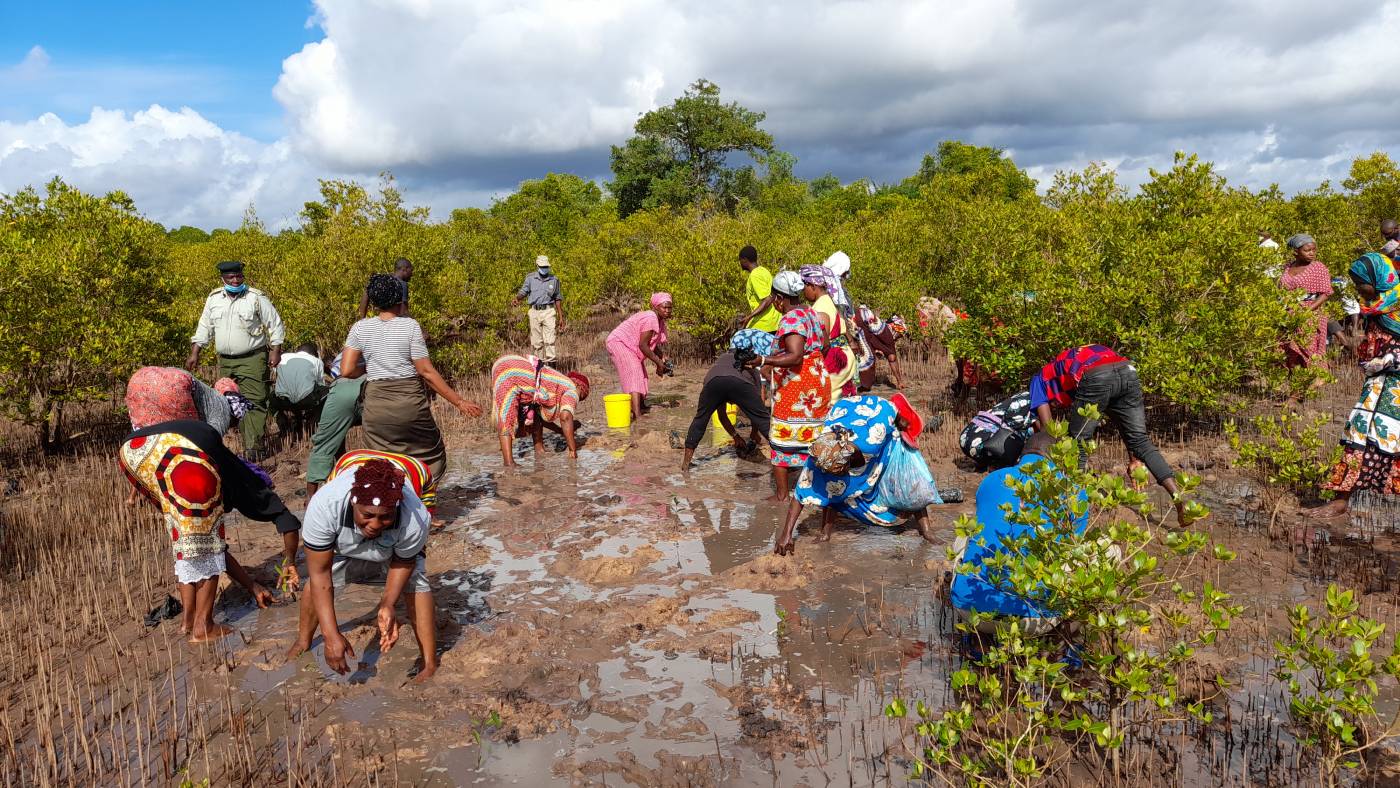
A group of villagers of Gasi bay planting mangroves during the international day for mangrove conservation. Image credit: Courtesy of Cece Siago
1. Kenya
More than 3,000 residents of Gasi Bay, located on Kenya's eastern African coast, have stopped logging mangroves and have started replanting them. A community-led project known as “Mikoko Pamoja,” Swahili for “Mangroves Together,” is helping locals earn a living through conservation and “carbon credits.” In this process, international clients, often companies, pay for the restoration of mangrove forests. Over 5,000 seedlings have been planted in Gasi Bay.
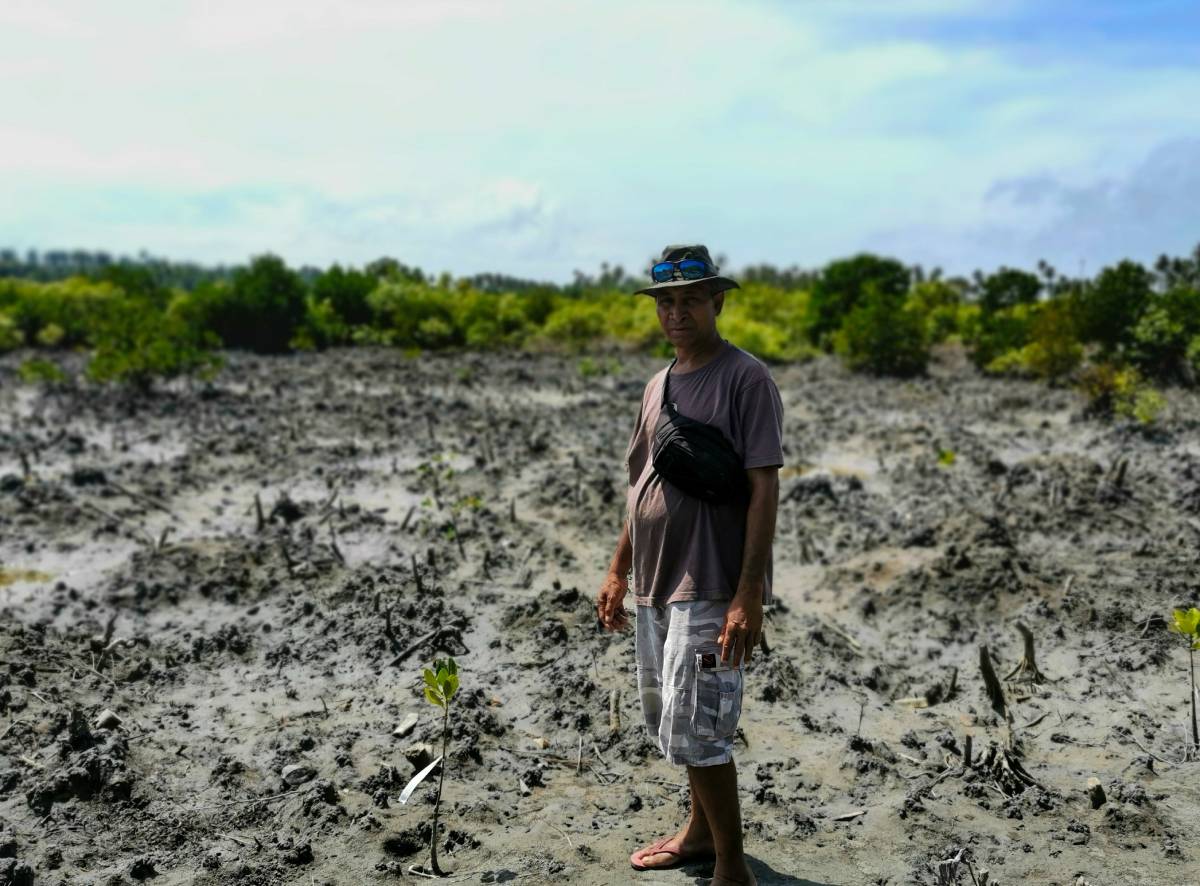
Carlos Kalo Alu standing where most of the mangroves have been depleted. This is one of the sites where the mangroves were planted by volunteers. Image credit: Courtesy of Lillian Kenequa
2. Papua New Guinea
Climate change has brought complications to the island of Papua New Guinea. Rising sea levels have affected water wells, eroded shorelines, prompted more floods during the monsoon season, and put villages like Alewai at risk for “washing away.” One resident, Kala Carlos Alu, has spent the last ten years spreading awareness about the importance of mangroves. He led the fight that made Papua New Guinea’s Conservation, Environment, and Protection Authority (CEPA) propose having one of their replanting programs in Alewai during World Environment Day.
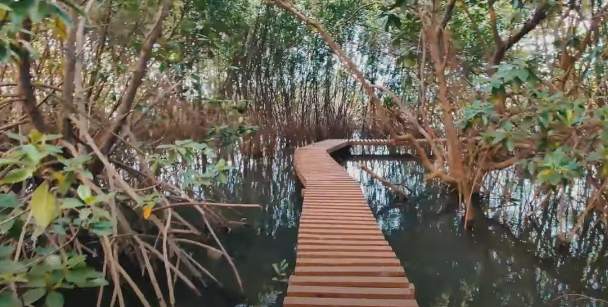
Mangroves play a predominant role in Karwar’s culture and history, aside from important sources of food and employment and protect them from climate impacts. Image credit: Courtesy of Ishita Yadav.
3. India
Karnataka, located in southern India, is home to over 300 hectares of mangrove forest distributed over three coastal regions. The Indigenous communities of two waterfront cities, Karwar and Honnavar, have developed a strategic mangrove conservation plan with the local government. The goal is to establish protection zones, fishing quotas and restrict tourism inside the mangrove forests. Over 14 species of fast-growing mangrove trees have been planted to reforest damaged areas.

Mangrove seedlings
4. Cambodia
Action Aid, an international NGO that works against poverty and injustice worldwide, started a campaign, She Is The Answer, which aids communities’ resilience to climate change through empowering local women. One of the programs in their campaign is a mangrove rewilding project in Kampot, Cambodia. The goal is to plant over 100,000 mangrove saplings along the shore. In addition to rewilding, the women have set up a network of climate-adaptive floating gardens and schools where future generations can learn about climate change and resilience.
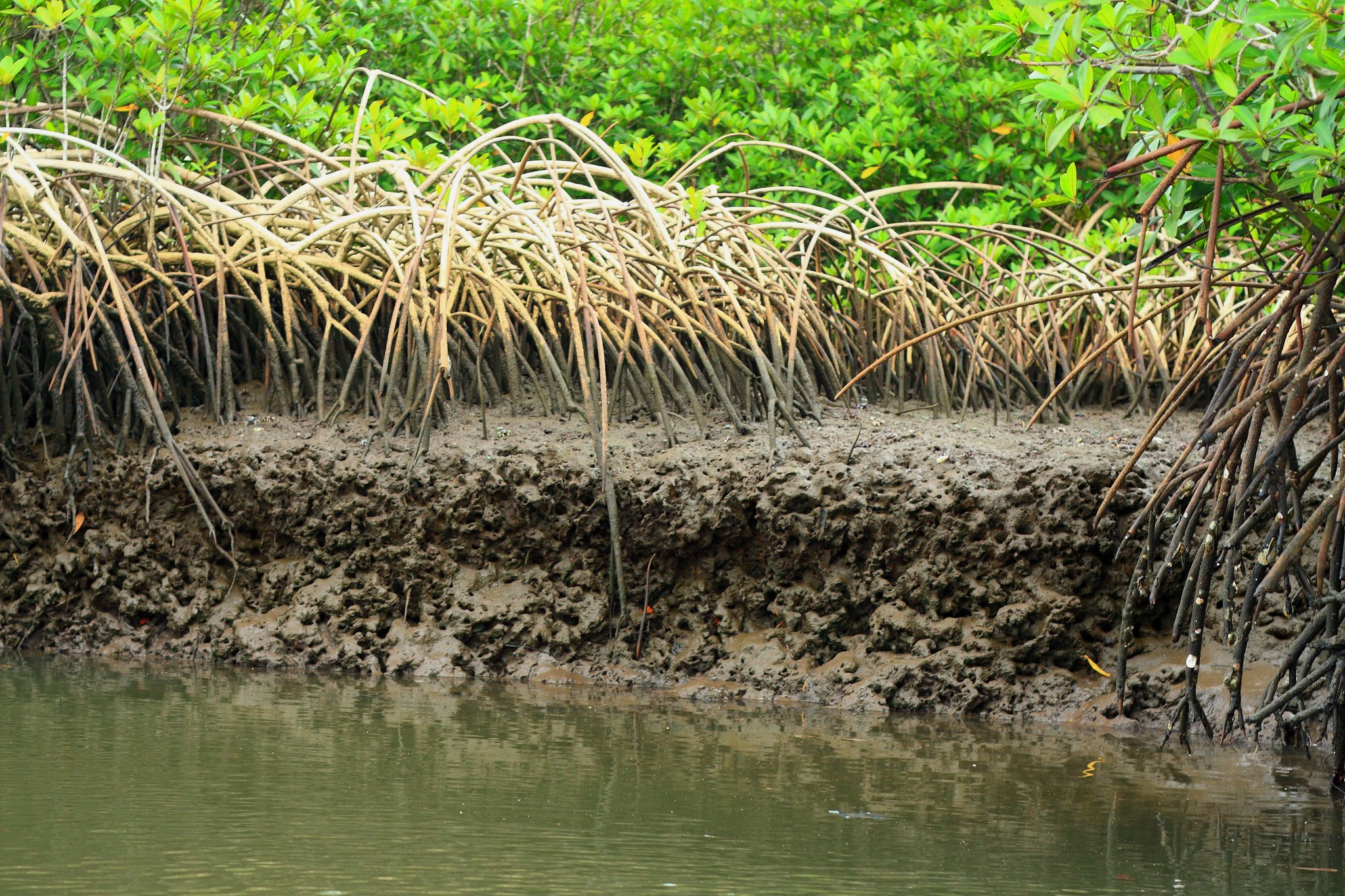
Mangrove roots. Image credit: Jerry Chidi
5. Nigeria
Nigeria has the largest reserve of water-friendly trees in Africa, but the country’s mangroves are amongst the worst degraded globally. On the International Day for the Conservation of the Mangrove Ecosystem 2020, Nigeria’s Minister of State for Environment, Sharon Ikeazor, announced the government’s plan to restore mangroves in the Niger Delta under the ‘Mangrove for Life’ project. The Mangrove Restoration Project aims to improve coastal sustainability by increasing mangrove cover by 25%. The project is community-led and has already begun raising seedlings.
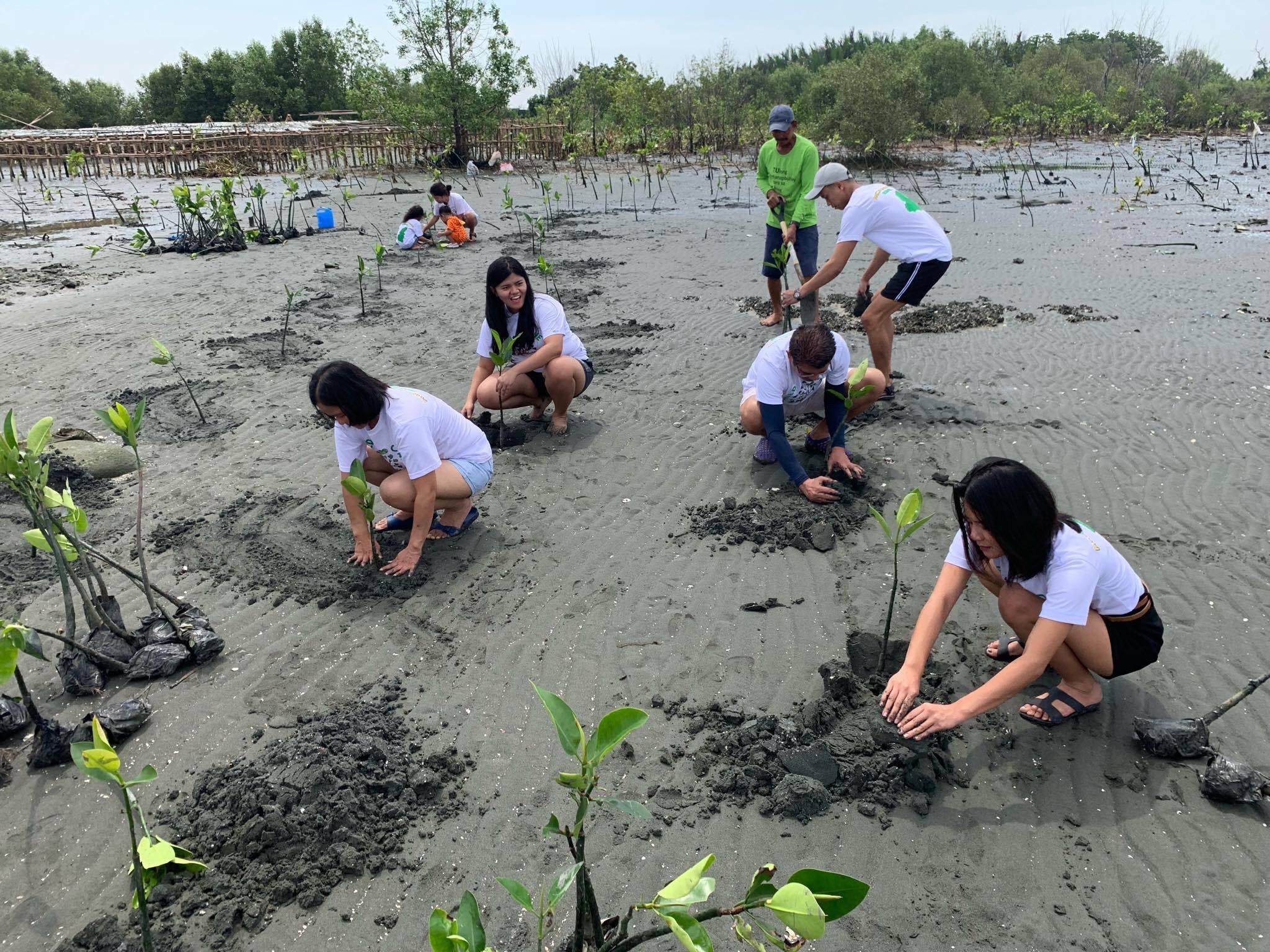
Sali's family and volunteers planting mangroves. Image credit: Courtesy of One Child, One Tree
6. The Philippines
The Hagonoy municipality, located beside Manila Bay, is hit by heavy flooding every year because of torrential rain. For one resident, Natalia Sali’s mission is to grow water-based plants like mangroves in the region that can significantly help reduce the effects of these storms. Her project, One Child, One Tree (OCOT), began by spreading environmental awareness among children through a school-based fruit tree planting program. Now, OCOT has expanded into coastal clean-ups, solid waste management, and mangrove planting across different towns in the region.
Whether through an individual, community, or government, efforts to restore mangroves are taking place across the globe. These six projects aid the climate crisis, protect biodiversity, and serve as an example to other coastal areas that local progress can lead to worldwide benefits. We are all in this together.
